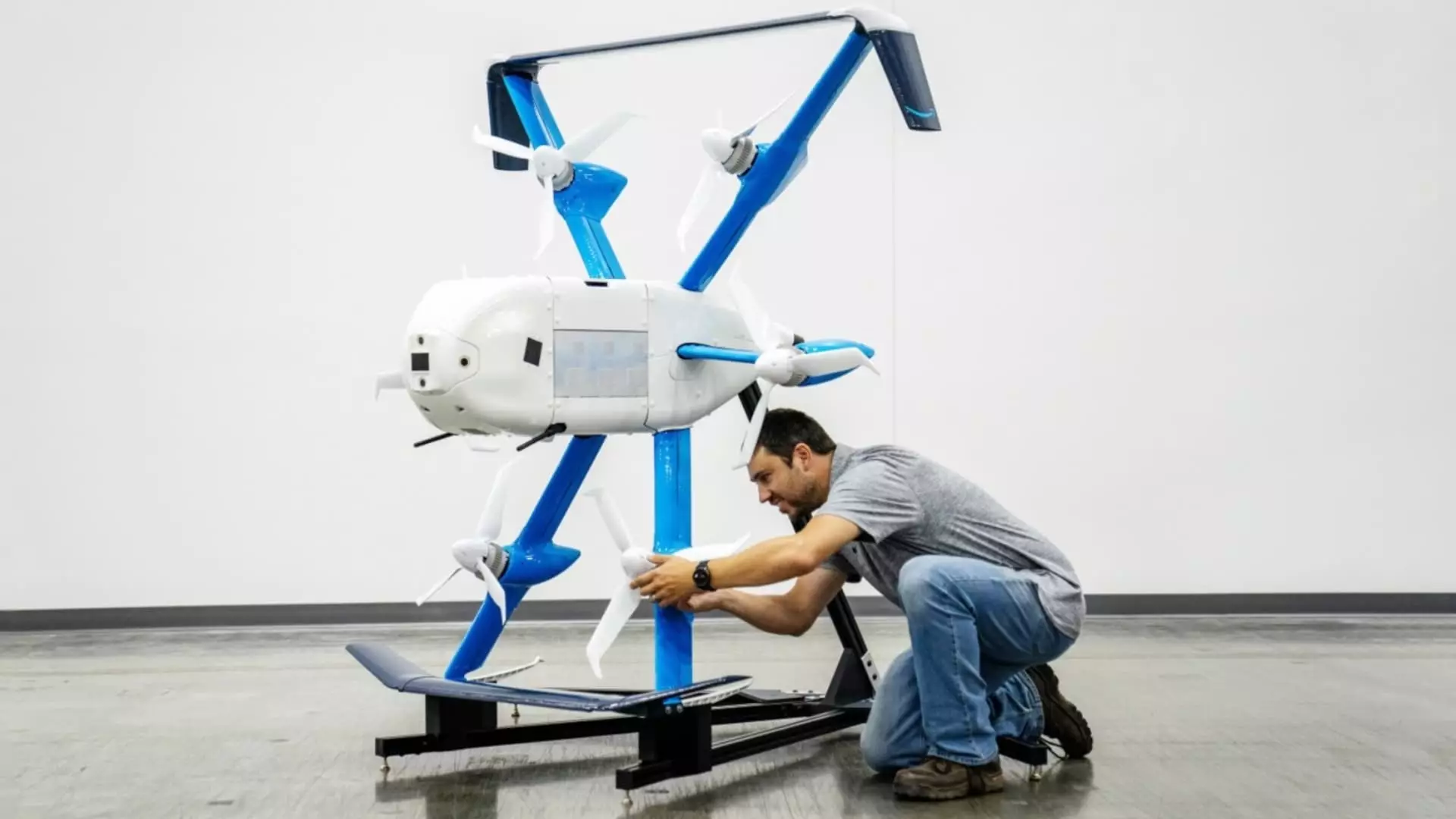Over the past decade, Amazon has ambitiously pursued a futuristic vision of package delivery using drones, a goal that has faced numerous obstacles along the way. As of late October 2023, the company received regulatory approval from the Federal Aviation Administration (FAA) to commence operations of its smaller and quieter delivery drone, the MK30. This approval marks a significant milestone in Amazon’s attempts to launch its Prime Air service, although the road has been riddled with challenges ranging from compliance with aviation regulations to public acceptance.
The MK30: A Leap Forward in Drone Technology
Amazon’s introduction of the MK30 drone reflects a notable evolution in drone technology. Unlike its predecessors, the MK30 is designed to endure light rain and boasts double the range, qualities aimed at enhancing operational capability and reliability. The new drone’s launch in November 2022 positioned Amazon as a frontrunner in the drone delivery race, illustrating its commitment to innovation within the logistics sector. The recent approval allows Amazon to perform longer flights and navigate beyond the visual line of sight—a crucial feature for scaling drone operations efficiently.
Yet, while the technological advancements promise improvements, the successful implementation of these innovations hinges on regulatory frameworks. The FAA’s cautious yet progressive stance towards drone operations is exemplified in its prior waiver issued to Amazon, permitting limited trials in College Station, Texas. However, skeptics may question whether these waivers reflect thoughtful oversight or a rushed approval process to stimulate a burgeoning industry.
Integration into Existing Logistics: A Strategic Move
The FAA’s latest endorsement has enabled Amazon to launch drone deliveries near Phoenix, Arizona, particularly in Tolleson, aiming to integrate Prime Air more closely with its extensive logistics network. This integration is vital for streamlining the delivery process which has been a cornerstone of Amazon’s business model. The decision to operate near a warehouse suggests a strategic effort to optimize existing resources while ensuring that drone deliveries can complement traditional means.
However, Amazon’s logistical maneuvers are about more than just efficiency. The company aims to address customer expectations for faster deliveries in an increasingly competitive market where timely service can influence consumer loyalty. The pressure to innovate is compounded by aggressive competition from companies like Wing, UPS, and Walmart, all of which are investing heavily in their drone delivery capabilities. Thus, for Amazon, the successful execution of its drone operations is not merely a tech upgrade but essential for maintaining market dominance.
Despite the promising developments, Amazon’s drone program has faced considerable regulatory challenges. The failure to meet previous deadlines and a series of setbacks, including layoffs and the loss of key executives, underscore difficulties in navigating both internal and external pressures. Hiring David Carbon, a seasoned former Boeing executive, signifies Amazon’s intent to stabilize leadership and drive the Prime Air initiative forward, but apprehensions linger about the long-term sustainability of the program.
Moreover, community reception poses another hurdle. In College Station, residents expressed concerns over noise pollution, leading to political implications when the mayor intervened on their behalf. This exemplifies a common dilemma faced by many tech companies venturing into urban environments; public acceptance is crucial for feasibility. Amazon’s promise to seek alternative drone delivery sites reflects its acknowledgment of the importance of community relations, yet it raises questions about balancing technological innovation with societal impact.
In the broader context, Amazon is not alone in the race towards drone delivery. It faces competition from various industry players, indicating a shaping competitive landscape poised for rapid evolution. As the FAA continues to adapt its regulations to accommodate the growing drone industry, the potential for widespread adoption looks promising yet remains dependent on continued advancements in technology, regulatory clarity, and social acceptance.
Amazon’s MK30 signifies a bold step forward in the company’s delivery strategy amidst a complex mix of innovation, regulation, and community dynamics. The coming years will determine whether Amazon can rise to the challenge and fulfill its long-awaited goal of revolutionizing package delivery through drones. The potential benefits to logistics efficiency are immense, but success will rely heavily on overcoming the multifaceted obstacles that lie ahead.

